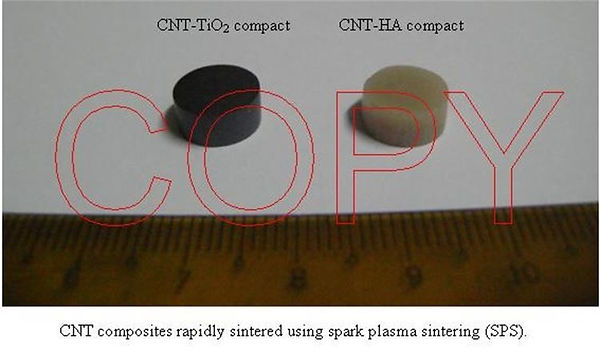
Nano Origins
Carbon nanotubes (CNTs) and related nanocomposite material for multiple applications
For an excellent global OVERVIEW of CNT research including why CNT is undoubtedly the ULTIMATE nano-material in nanotechnology today, please visit
https://en.wikipedia.org/wiki/Carbon_nanotube .
For legacy purposes, the earlier URL for reference remains listed even though inactive:
Here's my contribution on carbon nanotubes ...
(1) Alignment of CNTs in polymer matrix composites, by promotion of shear flow of the polymer matrix.





(2) Identification and characterization of the CNT-polymer interface formed, due to intimate contact between the CNT and polymer.





(3) Full and fast (in minutes) densification of CNT-titania and CNT- hydroxyapatite (HA) composites using the innovative spark-plasma sintering method.


(4) Synthesis of aligned CNTs (from unsupported nanosized Fe) by catalytic chemical vapour deposition (CCVD), using ferrocene as an organometallic precursor.


(5) Diameter-controlled synthesis (high-yield) of entangled CNTs by CCVD, by alteration of the catalyst active nanoparticle size (supported nanosized metal) or carbon deposition temperature.





(6) Synthesis (high-yield) of entangled CNTs by CCVD, using a variety of stoichiometrically formulated oxide(s)-ceramic supported nanosized metal powder catalysts: Ni and Co dispersed on alumina, silica, halfnia stabilized zirconia, magnesia, titania, tri-calcium phospate (TCP) and hydroxyapatite (HA).


(7) Purification of as-synthesized CNTs.
(8) Experimental verification of the inverse relationship between curvature strain energy of the CNT wall and its diameter, using X-ray diffraction (XRD).
